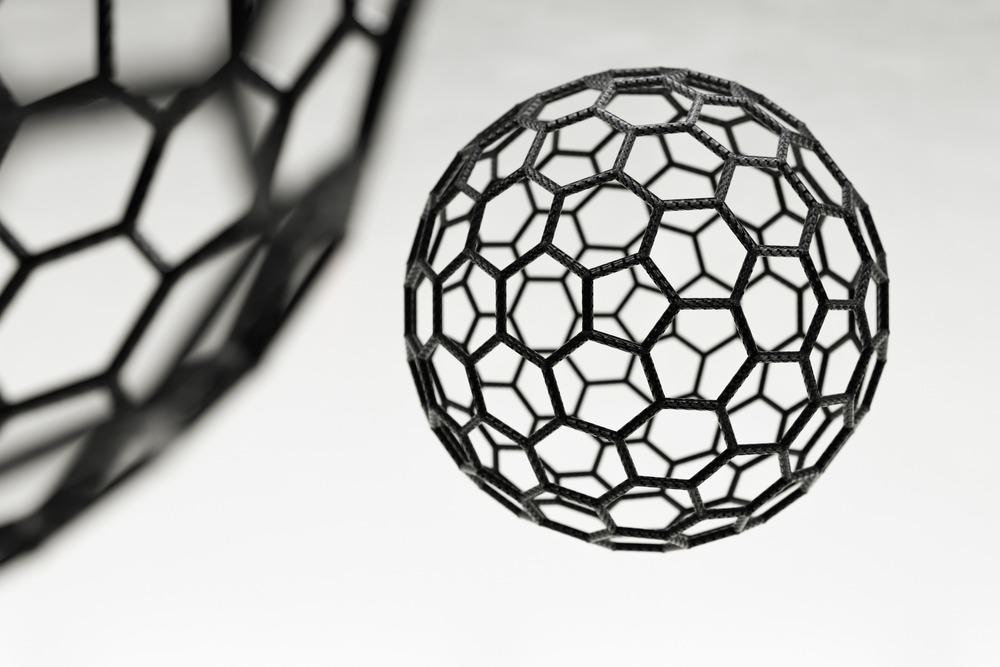A team of researchers recently submitted a paper to the journal Materials Chemistry and Physics that investigated the impact of thermal treatment on nitrogen-doped carbon spheres for supercapacitor and wastewater treatment applications.

Study: Influence of thermal treatment atmosphere on N-doped carbon spheres for wastewater treatment and supercapacitor applications. Image Credit: Forance/Shutterstock.com
Significance of Nitrogen-doped Carbon-based Materials
Recently, carbon-based materials gained significant attention for their potential in a range of applications, such as supercapacitors and wastewater treatment, owing to their biocompatibility, non-toxic nature, porosity, and high specific surface area. In wastewater treatment, absorption is the most preferred method owing to its inexpensiveness, ease of implementation, and high efficiency.
The carbon adsorbent material’s selectivity for certain materials and absorption capacity can be improved by doping the material with nitrogen. Nitrogen doping in different carbon materials can improve their electrochemical pseudo-capacitance and electrocatalytic oxygen reduction reaction (ORR) performance.
Among the nitrogen-doped carbon materials, nitrogen-doped carbon spheres have displayed considerable potential for different applications owing to their surface chemistry, controllable size, ease of formation, and inexpensiveness. However, nitrogen-doped carbon spheres synthesized from hydrothermal carbonization (HTC) have a low specific surface area. Different techniques, such as thermal activation, chemical activation, or both, can be applied to enhance the surface properties.
Among them, thermal treatment in an inert atmosphere and at high temperatures is one of the simplest techniques to improve both surface properties and surface area of nitrogen-doped carbon spheres. Nitrogen and argon are often used as carrier gases during the thermal treatment to achieve an inert atmosphere.
However, the properties of these carrier gases, such as specific heat, thermal conductivity, diffusivity, and density, which significantly differ from each other, can profoundly impact the heat treatment of a sample/nitrogen-doped carbon spheres.
Synthesis of N-doped Carbon Spheres by Heat Treatment in Inert Atmosphere
In this study, researchers investigated the impact of nitrogen and argon heating atmosphere on the applications and properties of the heat-treated nitrogen-doped carbon spheres. The spheres were heat-treated separately in nitrogen and argon atmospheres at 900oCelsius to modify their surface without using any additive. Nitrogen-doped carbon spheres were synthesized using glucose and soy flour through the HTC method.
Initially, glucose and soy flour were dispersed in an aqueous solution kept in a Teflon-lined stainless-steel autoclave, and the autoclave was then placed in a hot air oven for eight hours at 180o Celsius. The resultant brown-colored solution was centrifuged at 4500 rotations per minute to obtain the glucose-soy flour (GS) sample.
Subsequently, the sample was washed multiple times with deionized (DI) water and dried in an oven at 80oCelsius for 24 hours to obtain a dried GS sample with a 28% yield. The dried GS sample was again subjected to heat treatment separately in nitrogen and argon atmosphere in a tubular furnace for four hours at 900oCelsius to obtain GS-N and GS-Ar samples, respectively.
Characterization and Evaluation of the Synthesized Samples
Scanning electron microscope (SEM), X-ray diffraction (XRD), Fourier transform infrared spectroscopy (FTIR), ultraviolet-visible (UV-Vis) spectrophotometer, Raman spectrometer, X-ray photoelectron spectroscopy (XPS), Brunauer-Emmett-Teller (BET), and thermogravimetry-differential scanning calorimetry (TG-DSC) were used to investigate the impact of heating atmospheres on the properties of the synthesized samples.
The photodegradation and absorption capacity of the samples were compared using three model pollutants that include anionic eriochrome black-T (EBT), neutral p-nitrophenol (PNP), and cationic methylene blue (MB). The supercapacitance performance of the samples was investigated using galvanostatic charge−discharge and cyclic voltammetry curves.
Research Findings
Nitrogen-doped carbon spheres were successfully synthesized by the HTC method. The nitrogen content in the GS-N, GS-Ar, and GS samples was 1.17%, 1.54%, and 2.22%, respectively. The surface of GS-Ar and GS-N samples was more uneven compared to the GS sample, which indicated an increase in the surface area of GS samples after heat treatment with nitrogen/argon.
The amorphous GS sample was graphitized, and the nitrogen and oxygen contents in the sample were decreased after the heat treatment in the inert atmosphere owing to the release of volatile substances. The bandgap in the GS-N and GS-Ar samples was 4.8 electron volts, which was higher than the bandgap of the GS sample at 4.5 electron volts.
The graphitic and pyrrolic nitrogen functionalities in the GS sample were changed to oxidized, pyridinic, and graphitic nitrogen functionalities after the heat treatment of the sample. The concentration of graphitic nitrogen was highest owing to its higher thermal stability. The BET surface areas of GS-N, GS-Ar, and GS samples were 468.31, 449, and 7.43 square meters per gram, respectively.
The micropore size of GS-N and GS-Ar samples was 0.8 nanometers and 1.1 nanometers, with a similar pore volume. The graphitization and release of volatiles occurred simultaneously in the inert atmosphere, and the graphitization started earlier in the argon atmosphere than in the nitrogen atmosphere. The surface chemistry of the GS samples underwent substantial changes after the heat treatment in the inert atmosphere.
The absorption rate of EBT and PNP in dark was maximum in the GS-Ar sample at 67.4% and 56.8%, respectively. The rate of decolorization of EBT, MB, and PNP under UV irradiation was maximum in the GS-Ar sample after three hours at 78.2%, 82%, and 60.7%, respectively. The GS-Ar sample also displayed the best supercapacitve performance among all synthesized samples with a total capacitance of 59.06 F/g.
Taken together, the findings of this study demonstrated that nitrogen-doped carbon spheres heat-treated in the argon atmosphere can be used effectively in applications such as energy storage device electrodes and wastewater treatment.
Reference
Choudhary, R., Pandey, O.P., Brar, L.K. et al. (2022) Influence of thermal treatment atmosphere on N-doped carbon spheres for wastewater treatment and supercapacitor applications. Materials Chemistry and Physics https://doi.org/10.1016/j.matchemphys.2022.126037
Disclaimer: The views expressed here are those of the author expressed in their private capacity and do not necessarily represent the views of AZoM.com Limited T/A AZoNetwork the owner and operator of this website. This disclaimer forms part of the Terms and conditions of use of this website.